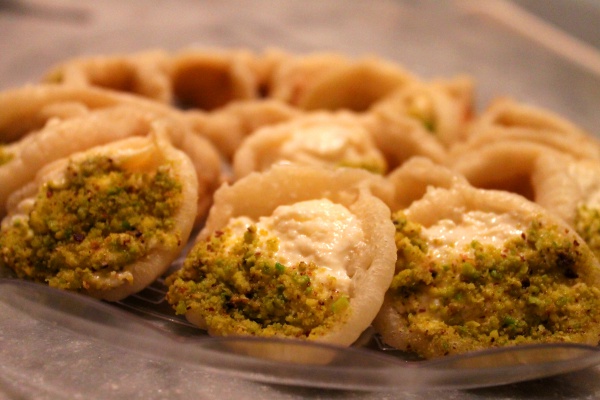Facts About Qatayef
Qatayef, sometimes spelled Katayef, is a cherished Arab dessert that takes center stage during the month of Ramadan. Imagine a sweet dumpling, akin to a folded pancake, filled with luscious cream or nuts. Its name is derived from the Arabic word "qtf" meaning to pick up or pluck.
This delightful treat has a rich history, dating back to the Fatimid Dynasty and even further to the Abbasid Caliphate between 750-1258 CE. The earliest known mention of Qatayef appears in a 10th-century Arabic cookbook called Kitab al-Ṭabīḫ by Ibn Sayyar al-Warraq. Traditionally, street vendors and households in the Levant and Egypt prepare Qatayef, often using Akkawi cheese for the filling.
Making Qatayef starts with a simple batter of flour, baking powder, water, yeast, and occasionally a bit of sugar. This batter is poured onto a hot griddle, cooking only one side to achieve a pancake-like appearance. Once cooked, it’s ready to be stuffed and folded. The fillings can range from unsalted sweet cheese to a mix of nuts, raisins, powdered sugar, vanilla extract, rosewater, and cinnamon. After stuffing, these little delights can be deep-fried or baked, then served with a drizzle of hot sweet syrup or honey.
There’s also a variation called Assafiri Qatayef, where the pancakes are filled with whipped cream or clotted cream, folded halfway, and served with fragrant syrup, omitting the frying or baking step. This version is equally delicious and often enjoyed without the extra cooking.
Qatayef is more than just a dessert; it’s a cultural icon that brings people together during special occasions and festive gatherings in Arab communities. Whether deep-fried and crunchy or soft and creamy, Qatayef is a treat that’s sure to bring a smile to anyone’s face.

 Israel
Israel